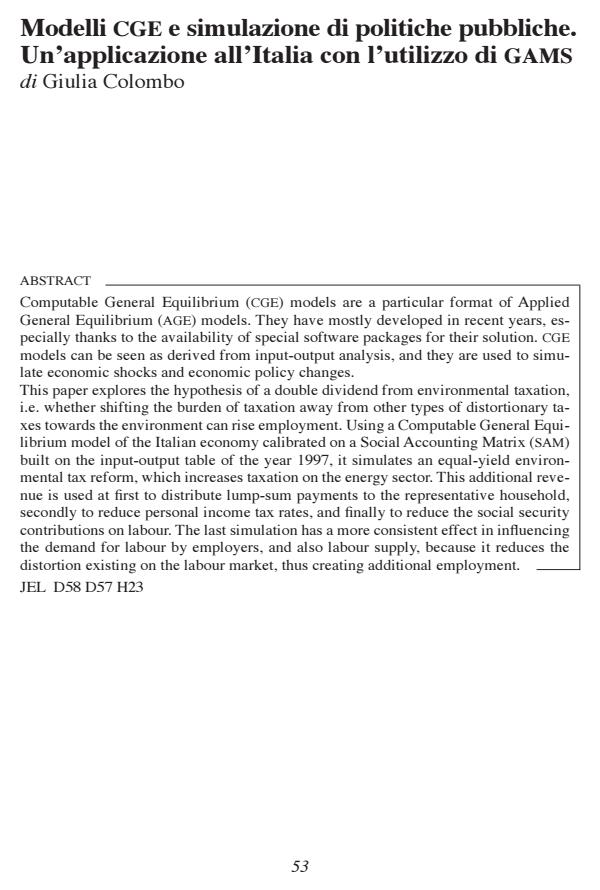Modelli cge e simulazione di politiche pubbliche. Un'applicazione all'Italia con l'utilizzo di GAMS
Journal title ECONOMIA PUBBLICA
Author/s Giulia Colombo
Publishing Year 2007 Issue 2007/1-2
Language Italian Pages 34 P. 53-86 File size 431 KB
DOI
DOI is like a bar code for intellectual property: to have more infomation
click here
Below, you can see the article first page
If you want to buy this article in PDF format, you can do it, following the instructions to buy download credits

FrancoAngeli is member of Publishers International Linking Association, Inc (PILA), a not-for-profit association which run the CrossRef service enabling links to and from online scholarly content.
Computable General Equilibrium (cge) models are a particular format of Applied General Equilibrium (age) models. They have mostly developed in recent years, especially thanks to the availability of special software packages for their solution. cge models can be seen as derived from input-output analysis, and they are used to simulate economic shocks and economic policy changes. This paper explores the hypothesis of a double dividend from environmental taxation, i.e. whether shifting the burden of taxation away from other types of distortionary taxes towards the environment can rise employment. Using a Computable General Equilibrium model of the Italian economy calibrated on a Social Accounting Matrix (sam) built on the input-output table of the year 1997, it simulates an equal-yield environmental tax reform, which increases taxation on the energy sector. This additional revenue is used at first to distribute lump-sum payments to the representative household, secondly to reduce personal income tax rates, and finally to reduce the social security contributions on labour. The last simulation has a more consistent effect in influencing the demand for labour by employers, and also labour supply, because it reduces the distortion existing on the labour market, thus creating additional employmen
Giulia Colombo, Modelli cge e simulazione di politiche pubbliche. Un'applicazione all'Italia con l'utilizzo di GAMS in "ECONOMIA PUBBLICA " 1-2/2007, pp 53-86, DOI: